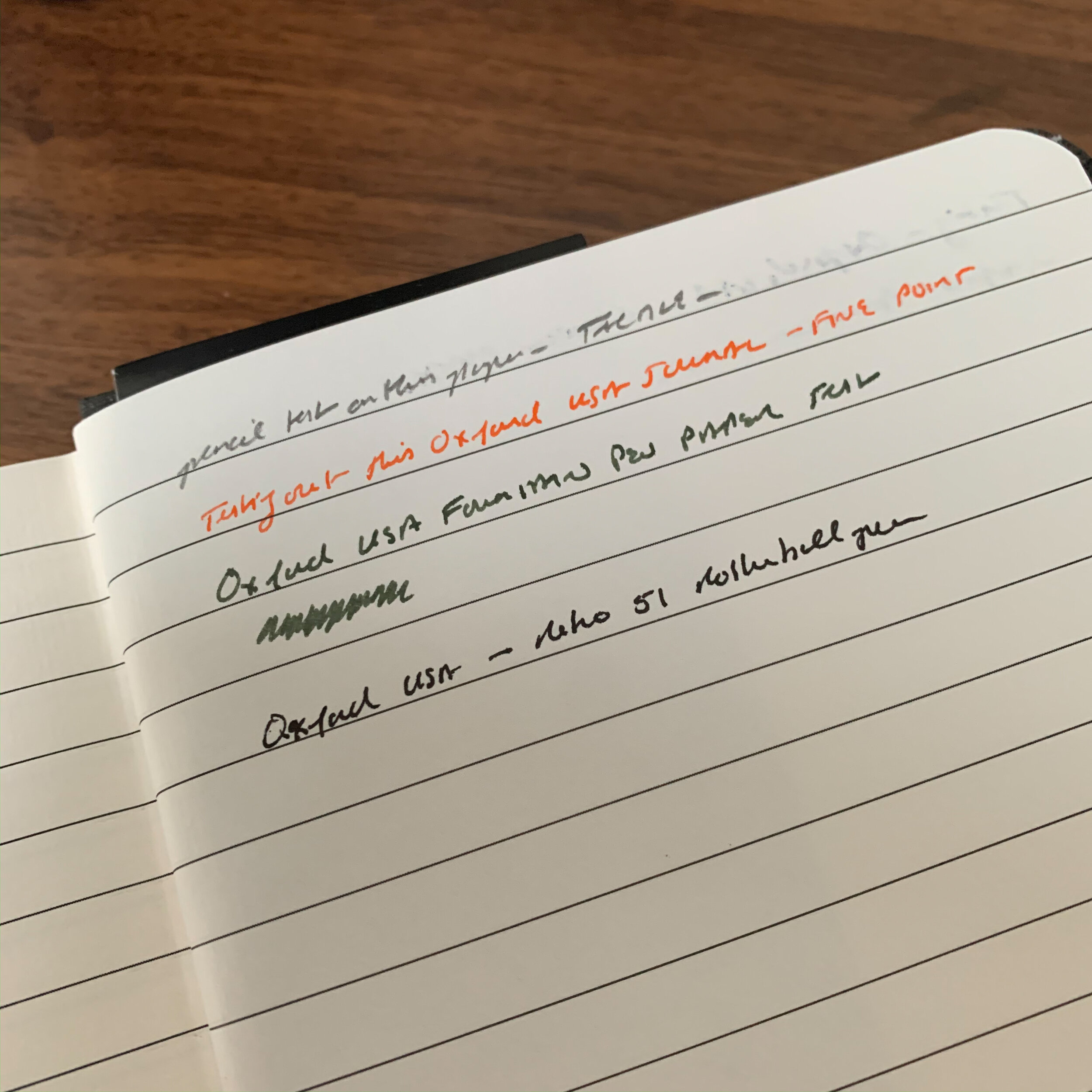The second category of paper that I’m going to discuss as part of my “Everyday Writing” series is probably the one that I use the least: slim softcover notebooks. It’s not that I don’t find these notebooks “bad” in any way, it’s just that they rarely meet my personal needs. I tend to be hard on notebooks, and often a soft cover - particularly those made from paper or card stock - will wear quickly, fall off and need to be reinforced with tape before I actually finish the notebook. I also generally prefer to use a single book for multiple projects, relying on an index or bookmarks to separate pages by subject matter. This is mainly a matter of convenience, since I don’t want to have to carry too much when I commute or travel. That said, many people who like to use individual notebooks for different projects swear by the slim softcover format, and I’m slowly coming around and beginning to incorporate them into my workflow, particularly for projects like logging household expenses and home improvements, where the notebook lives on a desk and not in my bag.
BaronFig Vanguard Softcover Notebook. At $12 for a pack of three, BaronFig’s Vanguard softcover notebook is one of the best buys out there if you like smaller, “single-subject” books. I enjoy BaronFig’s paper, and while it’s not the most fountain pen friendly option out there, it’s certainly good enough for my use case, especially at this price point. Baron Fig will also periodically release limited edition Vanguard notebooks, such as the current “New York City” softcover set.
Write Notepads Paper Notebook/Journal. The surprise hit from the Baltimore Pen Show, where I sold out of these Write Notepads notebooks/journals in a matter of hours. These lined notebooks contain the same premium fountain pen friendly paper found in Write Notepads’ larger spiral notebooks, and come in a wide array of cool colors with a design reminiscent of vintage books that you might have stolen from your parents’ office supply closet back in the day. I absolutely love Write Notepads’ paper, and they’re one of the only brands I currently carry in my curated shop. (They’re now restocked!)
Studio Neat Totebook. At a higher price point that the previous two options, Studio Neat’s Totebook sells in packs of 2 for $20, but offers a slightly more durable leatherette cover, 100gsm dot grid paper, and 8 perforated sheets at the back. If I were to choose a softcover notebook as a “daily carry”, it would likely be the Totebook simply due to durability. I also love that Studio Neat includes archival stickers that you can use to label the spine of your notebook when you’ve finished.
Life Noble Note A5 Sidebound. If you want both quantity (in terms of sheets in a notebook) and quality (in terms of premium paper), consider Life, a premium Japanese brand that makes some of the best notebooks around. At $20 per notebook, they’re expensive for a softcover, but you get 100 sheets of paper. The question, at least for me, is whether a softcover notebook will survive long enough for me to actually use all of this paper.
Midori MD Notebook Light. Midori is another exceptional Japanese paper brand that makes softcover “Light” notebooks in both A5 and slimmer B6 sizes. The great thing about these notebooks is that Midori makes PVC covers. I’ve not tried this, but I’ve heard you can fit two volumes of the “Light” notebooks into one cover. Midori paper is quite versatile and handles fountain pen ink well.
Both the Studio Neat Totebook and the BaronFig Vanguard are best described as “A5-ish”. They are both slightly smaller than a standard A5 notebook, whereas the Write Notepads Paper Journal is a closer match at 5.5” by 8.5”.
Takeaways and Final Thoughts
Though this particular format is not a personal favorite, that doesn’t mean it won’t meet your needs. If you best organize your thoughts and projects using separate notebooks for different topics, the slim softcover format is a highly cost effective way to do that, especially if you need more space than a pocket notebook can provide. As I mentioned above, if I had to pick one notebook from this list, I’d roll with the Studio Neat Totebook, if for no other reason than the increased durability offered by the leatherette cover.
The Studio Neat Totebook pleasantly surprised me, and I’m looking for a way to get this notebook into my workflow soon. I previously reviewed Studio Neat’s “Panobook” panoramic spiral notebook, and if they' ever decide to use the Totebook’s paper in that format, I’d buy a dozen immediately. I’m becoming a fan of the Panoramic notebook for computer work.
Further Reading
Don’t miss “The Best Paper for Everyday Writing, Part I: Best Hardcover Notebooks.” If you’d like to read further on my recommendations for “Everyday Writing” tools other than paper, please check out my posts “Choosing the Best Pens and Pencils for Life” and “The Best Fountain Pen Inks for Daily Use”. I also recently updated my “Best Pens” recommendations page, which contains multiple lists of pen recommendations for users at different price points and experience levels.
Disclaimer: The three notebooks pictured in this review were provided to me free of charge as product samples.

